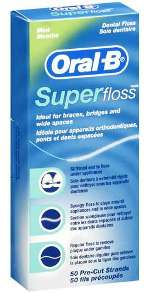Easter Do's and Don'ts If You Have Braces
March 26th, 2021
 With Easter just around the corner, you may be daydreaming about all those delicious treats hidden in baskets and colorful plastic eggs. Unfortunately some of the most popular Easter candies are ooey, gooey, caramel-filled, and sticky sweet. They can get trapped in braces and possibly lead to tooth decay.
With Easter just around the corner, you may be daydreaming about all those delicious treats hidden in baskets and colorful plastic eggs. Unfortunately some of the most popular Easter candies are ooey, gooey, caramel-filled, and sticky sweet. They can get trapped in braces and possibly lead to tooth decay.
If you're worried that you won't be able to enjoy your favorite candies and treats this Easter, fear not! There are several traditional holiday options that are safe as long as you do some major brushing and flossing afterwards. Here are some helpful tips for a fun, braces-friendly Easter holiday.
What You Should Avoid
Anything that is hard, chewy and/or sticky may cause damage to orthodontic brackets and wires. Here are some specific examples of Easter candy that should steer clear of if you have braces:
- Sticky Candy: Jellybeans, Starbursts, Tootsie Rolls, Taffy, Nerds
- Caramels: Milky Ways, Snickers, Pay Day, Twix, caramel eggs
- Gummy candy: Gummy Bears, chewing gum
- Hard candy: Hard-shelled Easter eggs, Jolly Ranchers
- Chocolate with nuts: Almond Joy Bars, Jordan Almonds
By keeping these candies away from kids, parents can avoid bent wires, broken brackets and extra trips to see Dr. Stephen Godwin and the team at Bel Air Orthodontics for repair. Damaged braces can increase treatment time, and no one wants that! Make sure to always keep your braces and your smile in tip-top shape.
Sweet Alternatives You Can Eat In Moderation
Kids (with or without braces) don’t have to avoid candy or sweets altogether! There are some better options that, with proper brushing, can make for a more braces-friendly basket. With a little creativity, you can still splurge during Easter without eating anything that's damaging to your braces. Here are a few examples of what you can eat this Easter:
- Marshmallows: Peeps are an Easter classic! They're on our "Safe" list because they're a soft melt-in-your- mouth treat; however, the gooey marshmallow can get stuck in your braces. If you indulge, make sure you brush thoroughly immediately afterwards.
- Soft chocolates: Just make sure they don't have any caramels, nuts or a hard shells. Look for melt-in-your-mouth options like peanut butter eggs, M&M's and chocolate bunnies or foil eggs.
- Ice cream: Enjoy them in classic Easter colors like pink or blue.
- Baked Goods: Cupcakes, cookies and brownies are the perfect canvas for Easter-themed indulgences.
- Hard-boiled Eggs: Decorate the outside, then enjoy the soft center!
Healthier Options For Easter Fun
Instead of candy, there are lots of other things to place in Easter baskets that can make Easter morning just as special and fun for kids of all ages. Try creating a themed basket based on a favorite hobby, like art or craft supplies, books, or gardening tools. You can also balance the yummy sweets with non-edible treats like games, toys or gift cards.
Coming up with ideas for Easter basket treats while wearing braces can be half the fun, so use your imagination and have a great time. Dr. Stephen Godwin and the Bel Air Orthodontics team wish you all a Happy Easter!

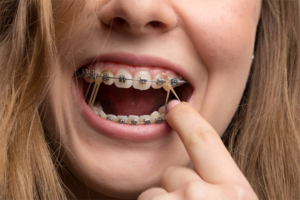

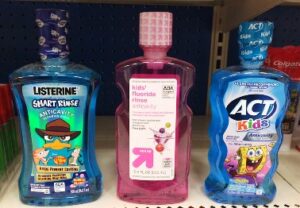 There are so many ways you can protect your teeth throughout your orthodontic treatment. We recommend you brush your teeth at least two times per day, floss regularly and protect your mouth and appliances from damage by making smart food choices. But did you know there is another, often forgotten, way to keep your teeth clean and healthy during your treatment? Fluoride, a mineral found in your water and many dental products can keep your teeth strong.
There are so many ways you can protect your teeth throughout your orthodontic treatment. We recommend you brush your teeth at least two times per day, floss regularly and protect your mouth and appliances from damage by making smart food choices. But did you know there is another, often forgotten, way to keep your teeth clean and healthy during your treatment? Fluoride, a mineral found in your water and many dental products can keep your teeth strong.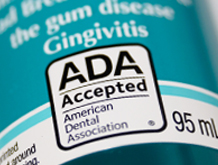
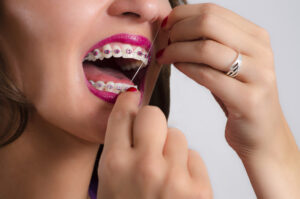 February is National Children's Dental Health Month, and the team at Bel Air Orthodontics want to remind everyone about the importance of good oral hygiene and the role it plays in the health of your teeth and the success of your orthodontic treatment.
February is National Children's Dental Health Month, and the team at Bel Air Orthodontics want to remind everyone about the importance of good oral hygiene and the role it plays in the health of your teeth and the success of your orthodontic treatment.
